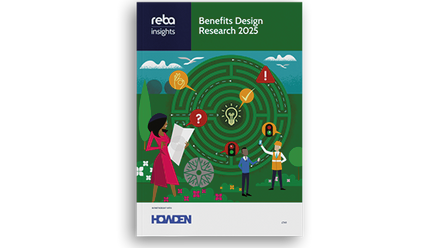Three compelling ways to make pensions part of a wider savings strategy

But thankfully this is changing. Employers are starting to recognise that for a large and increasing group of employees, namely millennials, planning for retirement is not priority. It’s important, but there are more pressing financial needs.
Fewer than 10% of millennials are concerned about retirement planning and so, not surprisingly, aren’t particularly engaged with their workplace pension scheme, according to our realigning the workplace savings offering to meet the needs of millennials (2019) research.
This younger cohort are more focused on how to get on the housing ladder; over 25% cited that this was their biggest financial concern. Other issues that keep them awake at night are how to save consistently (25%) and how to manage debt (17%).
With millennials making up at least 35% of the current UK workforce – KPMG’s meet the millennials (2017) report – workplace savings need to reflect their varied financial needs. If more than a third of the workforce is not engaging with the most expensive employee benefit on offer, that is pensions, then there needs to be a change.
But change doesn’t mean getting rid of pensions. After all, we now live in the world of auto enrolment. But it does mean making sure that pensions aren’t the only savings scheme available.
So how do you create a workplace savings plan that includes pensions but meets the needs of all employees, including millennials?
1. Recognise that pensions aren’t the only long-term savings vehicle available
Even the government has recognised that younger people are torn between saving for the longer term, while trying to save for shorter term goals such as buying their first home. Hence the introduction of the Lifetime ISA (LISA) in 2017, which is available to employees under the age of 40.
It is amazing that the LISA isn’t yet a “must have” for all workplace savings schemes. With a government bonus of 25% (up to a maximum of £1,000 per annum) added monthly, this is a great way for employees to save for their first home.
Once they have purchased their first home, they can carry on saving and start withdrawing money from age 60. So, it’s also a great way to save for retirement in conjunction with a pension scheme.
Money can be withdrawn for anything else at any time before 60, but there’s a 25% penalty to pay.
Employees can save up to £4,000 a year until they reach 50. The LISA continues but no further contributions can be made, and the government bonus stops.
For older employees, there are other individual savings account (ISA) options available to them; just not the LISA.
2. Split contributions
Under auto enrolment, there are minimum contribution levels. But a lot of employers offer pension schemes that have contribution levels in excess of the set minimums.
Some employers are now allowing employees the choice to have these excess contributions paid into an ISA instead of the pension scheme.
For instance, there might be an excess of 2% of pensionable pay above the minimum (1% from the employer and 1% from the employee). The employee is given the choice for these excess contributions to go into an ISA.
For a younger employee who is eligible for a LISA, this can be a far more engaging proposition than just a pension on its own. The employee is saving for retirement but can now also save for a house, which is made easier by a 25% government bonus and an additional 2% of pensionable pay – the best of both worlds!
In our research, nearly 30% of millennials said they would be more likely to contribute to workplace savings if this type of arrangement was in place.
3. Make saving easier
Even if there are no excess pension contributions that can be redirected into an ISA, the employer can still expand the workplace savings offering with just a voluntary arrangement alongside the pension scheme.
Employees join the pension scheme but can also save or invest into an ISA.
To get engagement, the employer needs to allow contributions to be deducted from pay and the joining process needs to be easy. Employees find saving directly from pay a lot easier than setting up their own arrangements.
Our research found that nearly 90% of millennials would take up support offered by the employer to address their financial concerns. This is the power of the workplace.
This article is provided by Smarterly.
Supplied by REBA Associate Member, NatWest Cushon
NatWest Cushon is a workplace pensions and savings provider with an award-winning proposition.







